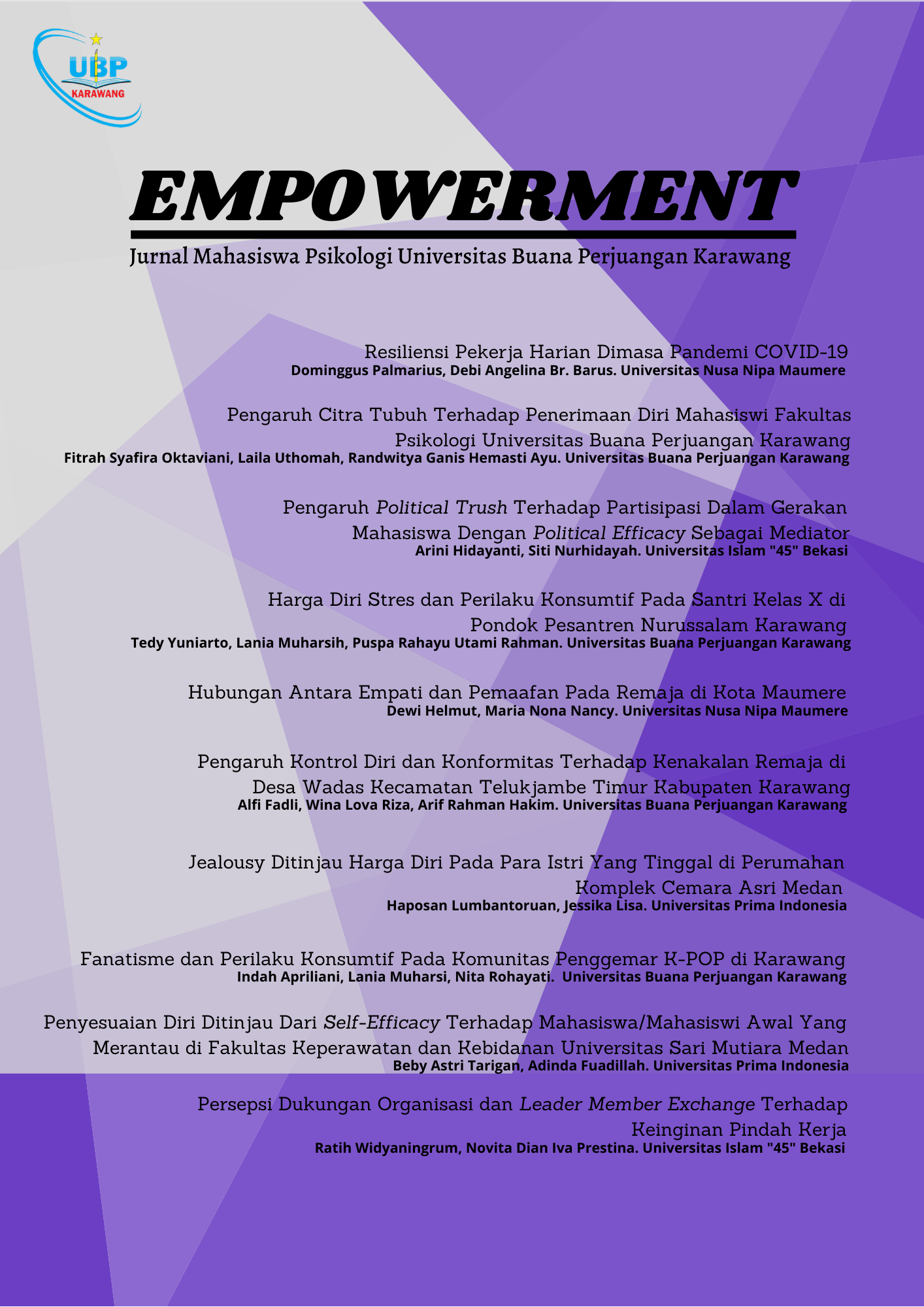PERILAKU BULLYING DITINJAU DARI PEER GROUP PADA SISWA-SISWI SMA GLOBAL PRIMA MEDAN
Abstract
Penelitian ini bertujuan untuk mengetahui hubungan antara peer group dengan
perilaku bullying. Hipotesis yang diajukan dalam penelitian ini adalah ada hubungan positif
antara peer group dengan perilaku bullying, dengan asumsi semakin tinggi peer group, maka
semakin´ tinggi perilaku bullying dan sebaliknya semakin rendah peer group maka semakin
rendah perilaku bullying. Teknik pengambilan sampel yang digunakan dalam penelitian ini
adalah teknik purpossive sampling. Subjek penelitian yang digunakan dalam penelitian ini
adalah siswa-siswi SMA GLOBAL PRIMA MEDAN yang berjumlah 150 orang dengan
karakteristik usia 15 sampai 17 tahun. Data diperoleh dari skala untuk mengukur peer group
dan perilaku bullying. Perhitungan dilakukan dengan melalui uji prasyarat analisis (uji
asumsi) yang terdiri dari uji normalitas dan uji linearitas hubungan. Analisis data yang
digunakan adalah menggunakan korelasi Product Moment melalui bantuan SPSS 21 for
Windows. Hasil analisis data menunjukkan koefisien korelasi sebesar 0,431 dengan p sebesar
0,000 (p < 0,05). Ini menunjukkan ada hubungan positif antara peer group dengan perilaku
bullying. Hasil penelitian ini menunjukkan bahwa sumbangan yang diberikan variabel peer
group terhadap perilaku bullying adalah sebesar 18,6 persen peer group mempengaruhi
perilaku bullying dan selebihnya 81,4 persen dipengaruhi oleh faktor lain seperti iklim
sekolah, komunikasi interpersonal, harga diri, kepribadian, dan perilaku over protective orang
tua. Dari hasil penelitian ini dapat ditarik kesimpulan bahwa hipotesis penelitian ada
hubungan positif antara peer group dengan perilaku bullying dapat diterima
This study aims to see the relationship between peer groups and bullying behavior.
The hypothesis proposed in this study is that there is a positive relationship between peer
groups and bullying behavior, with the assumption that the higher the peer group, the higher
the bullying behavior and vice versa, the lower the peer group behavior, the lower the
bullying behavior. The sampling technique used in this study was purposive sampling
technique. The research subjects used in this study were GLOBAL PRIMA MEDAN high
school students who can measure 150 people aged 15 to 17 years. Data obtained from a scale
to measure peer group and bullying behavior. The calculation is done through the analysis
prerequisite test (assumption test) which consists of a normality test and a relationship
linearity test. The data analysis used is to use the Product Moment view through the help of
SPSS 21 for Windows. The results of data analysis showed no evidence of 0.431 with p of
0.000 (p <0.05). This shows that there is a positive relationship between peer groups and
bullying behavior. The results of this study indicate that the contribution given by group
variables to bullying behavior is 18.6 percent of the group of friends influencing bullying
behavior and the remaining 81.4 percent from other factors such as school climate,
interpersonal communication, self-esteem, personality, and over parent behavior. protector. From the results of this study it can be concluded that the research hypothesis that there is a
positive relationship between peer groups and bullying behavior is acceptable.




